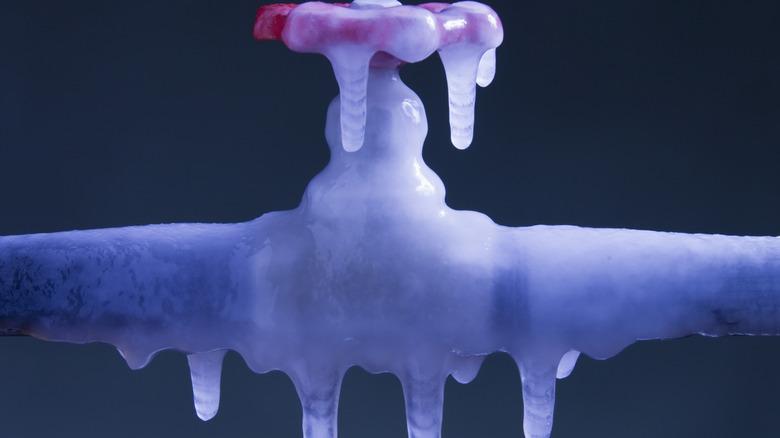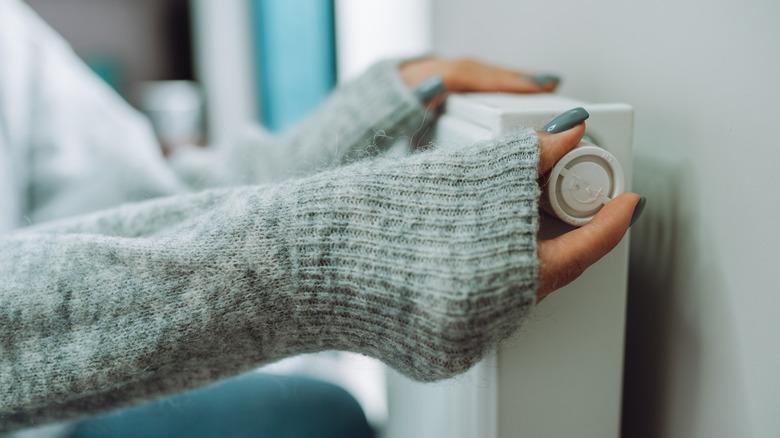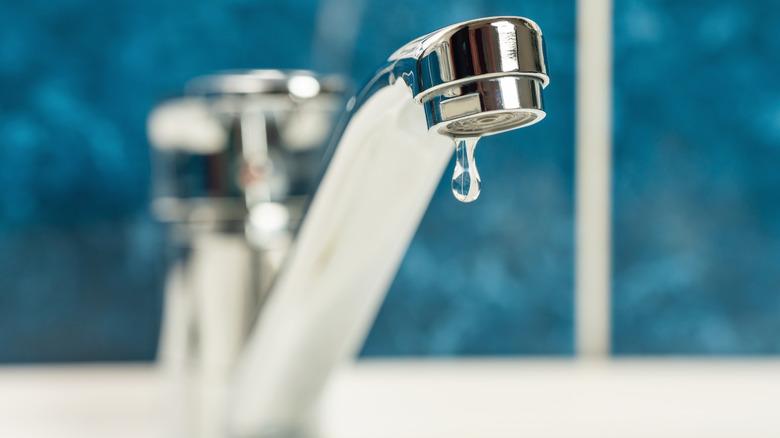Will Frozen Pipes Thaw On Their Own And Can You Speed Up The Process?
Freezing temperatures are a dangerous reality all across the United States, with the National Weather Service reporting thousands of injuries from just winter storm traffic conditions every year. There's an extended checklist of how to prepare your home for winter, as frost can have impacts that range in severity from killing plants to forming ice dams on your roof, leading to potential severe water damage. One particularly dangerous aspect of winter conditions is unprotected water pipes freezing when waterlines are exposed to the cold for several hours.
The good news? Frozen water pipes will begin to thaw on their own when freezing weather subsides. Around 20 degrees Fahrenheit is the threshold where you should expect pipes to be impacted, though outdoor pipes and those in less insulated areas like the garage are more vulnerable. It is also important to remember that your hot water is piped in from a separate heater, so you may only get the pipe for one temperature or the other thawed at any given time. If you hear gurgling sounds, water may be moving through the pipes and taking any leftover ice along for the ride.
Should you wait for the pipes to self-thaw, though, or take action? Thankfully, there are steps you can take to speed the thawing process up. However, the defrosting process is when damage really becomes apparent, meaning it's best to take preventative measures before having to deal with frozen pipes.
How to defrost your frozen pipes more quickly
There's no one firm rule about how long it takes for your frozen pipes to defrost, but with a little patience you can help find, thaw (and if needed, fix) frozen pipes. First, locate and shut off your main water supply so you can open a faucet connected to the pipe, ensuring the water frozen within has a place to flow after it thaws (while no additional water flows into the house if you discover a leak). Apply gentle heat to frozen sections of the pipe if you can reach them: This means using sources like a heating pad, hair dryer, or warm towel wraps — never use a blowtorch, propane heater, or similar solutions. An open flame is a fire hazard that can release carbon monoxide in an enclosed space, and if you boil the water in your pipes this increases the chance of damaging plastic or rubber connections in your faucet.
Isolating your currently frozen pipe(s) is important, but you can also speed up the thawing process by using an aforementioned light heat source at the point where water enters your home to send warmer water down the entire system.
If you can't find frozen pipes or can't reach them, it may be best to call a plumber for professional help. The biggest concern is that water expanding as it becomes ice will crack or split your pipes, leading to severe leaks in inaccessible areas — like behind your walls — as it thaws. That's why you should take preventative measures to prevent pipes from freezing at all.
How to help ensure your pipes never freeze in the first place
The only thing better than thawing your frozen pipes successfully is... well, making sure this problem never happens again. The most obvious first-step preventative measure for frozen pipes is to install some insulation; Wrapping your pipes in newspaper is a good solution in a pinch for shorter, less severe cold snaps, but really, you'll want to securely wrap your pipes in heat tape or other forms of proper insulation.
Of course, the impetus for pipes freezing over is exposure to cold conditions — sealing cracks in your foundation, vents, or wiring with the right type of concrete caulking can reduce this exposure, and having a steady home thermostat will similarly lower the risk of fluctuating temperatures leading to ice damage. You should cut off outdoor connections to your water supply so frozen conditions don't back up into the main network. Remove your garden hose, and drain that system alongside any outdoor water features such as your pool or sprinklers.
Dripping your faucet is also a classic trick to prevent frozen pipes, as it keeps a trickle of water constantly running to stop stagnation. However, this can be a waste of water, and there's still a chance for pipes to freeze since you can't run all hot and cold lines at once. It's best to use this method when you're going to be out of town (perhaps to escape the cold), at which point you'll also want to have a friend or neighbor regularly check your home for red flags to nip in the bud.


